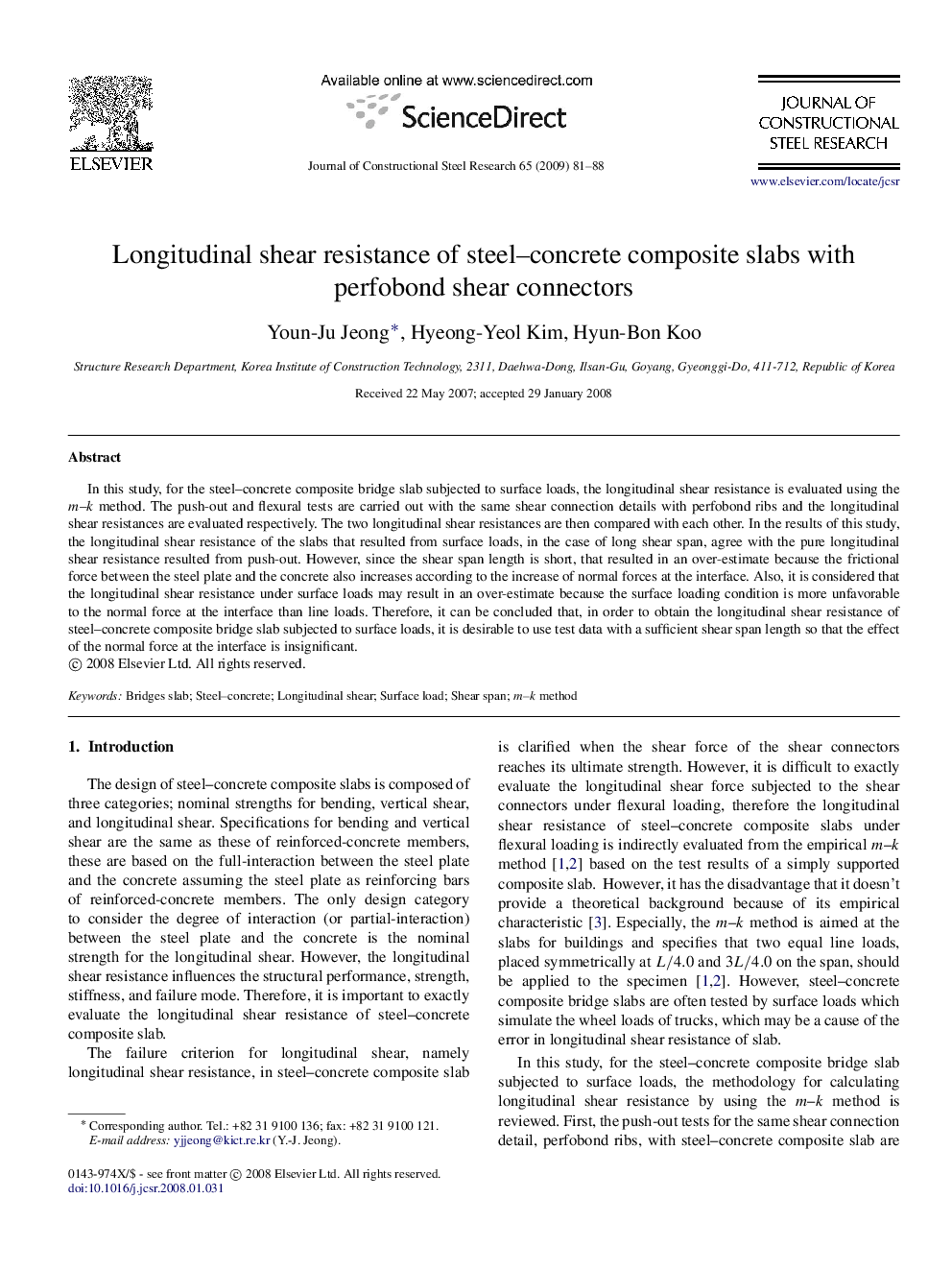| Article ID | Journal | Published Year | Pages | File Type |
|---|---|---|---|---|
| 285527 | Journal of Constructional Steel Research | 2009 | 8 Pages |
In this study, for the steel–concrete composite bridge slab subjected to surface loads, the longitudinal shear resistance is evaluated using the mm–kk method. The push-out and flexural tests are carried out with the same shear connection details with perfobond ribs and the longitudinal shear resistances are evaluated respectively. The two longitudinal shear resistances are then compared with each other. In the results of this study, the longitudinal shear resistance of the slabs that resulted from surface loads, in the case of long shear span, agree with the pure longitudinal shear resistance resulted from push-out. However, since the shear span length is short, that resulted in an over-estimate because the frictional force between the steel plate and the concrete also increases according to the increase of normal forces at the interface. Also, it is considered that the longitudinal shear resistance under surface loads may result in an over-estimate because the surface loading condition is more unfavorable to the normal force at the interface than line loads. Therefore, it can be concluded that, in order to obtain the longitudinal shear resistance of steel–concrete composite bridge slab subjected to surface loads, it is desirable to use test data with a sufficient shear span length so that the effect of the normal force at the interface is insignificant.
